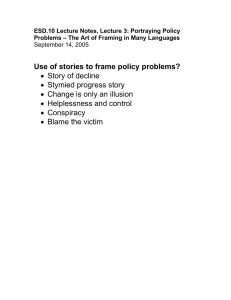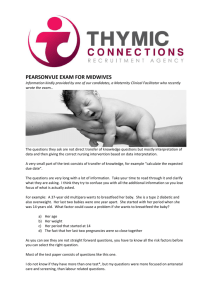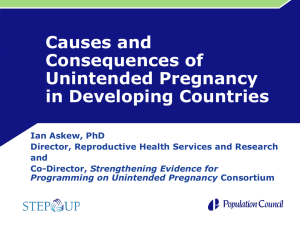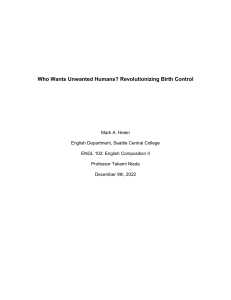Nursing Students; Calvin College, Grand Rapids, MI Findings
advertisement
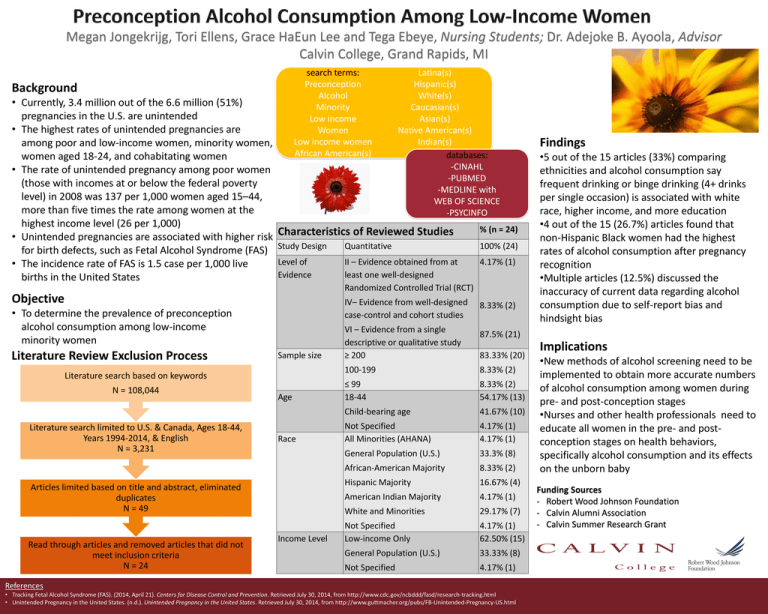
Megan Jongekrijg, Tori Ellens, Grace HaEun Lee and Tega Ebeye, Nursing Students; Dr. Adejoke B. Ayoola, Advisor Calvin College, Grand Rapids, MI search terms: Preconception Alcohol Minority Low income Women Low income women African American(s) Background • Currently, 3.4 million out of the 6.6 million (51%) pregnancies in the U.S. are unintended • The highest rates of unintended pregnancies are among poor and low-income women, minority women, women aged 18-24, and cohabitating women • The rate of unintended pregnancy among poor women (those with incomes at or below the federal poverty level) in 2008 was 137 per 1,000 women aged 15–44, more than five times the rate among women at the highest income level (26 per 1,000) • Unintended pregnancies are associated with higher risk for birth defects, such as Fetal Alcohol Syndrome (FAS) • The incidence rate of FAS is 1.5 case per 1,000 live births in the United States Characteristics of Reviewed Studies % (n = 24) Study Design Quantitative 100% (24) Level of Evidence II – Evidence obtained from at 4.17% (1) least one well-designed Randomized Controlled Trial (RCT) Objective IV– Evidence from well-designed case-control and cohort studies • To determine the prevalence of preconception alcohol consumption among low-income minority women Literature Review Exclusion Process Sample size Literature search based on keywords N = 108,044 Literature search limited to U.S. & Canada, Ages 18-44, Years 1994-2014, & English N = 3,231 Age Race Articles limited based on title and abstract, eliminated duplicates N = 49 Read through articles and removed articles that did not meet inclusion criteria N = 24 Latina(s) Hispanic(s) White(s) Caucasian(s) Asian(s) Native American(s) Indian(s) databases: -CINAHL -PUBMED -MEDLINE with WEB OF SCIENCE -PSYCINFO Income Level VI – Evidence from a single descriptive or qualitative study ≥ 200 8.33% (2) Findings •5 out of the 15 articles (33%) comparing ethnicities and alcohol consumption say frequent drinking or binge drinking (4+ drinks per single occasion) is associated with white race, higher income, and more education •4 out of the 15 (26.7%) articles found that non-Hispanic Black women had the highest rates of alcohol consumption after pregnancy recognition •Multiple articles (12.5%) discussed the inaccuracy of current data regarding alcohol consumption due to self-report bias and hindsight bias 87.5% (21) 83.33% (20) 100-199 8.33% (2) ≤ 99 18-44 8.33% (2) 54.17% (13) Child-bearing age 41.67% (10) Not Specified All Minorities (AHANA) 4.17% (1) 4.17% (1) General Population (U.S.) 33.3% (8) African-American Majority 8.33% (2) Hispanic Majority 16.67% (4) American Indian Majority 4.17% (1) White and Minorities 29.17% (7) Not Specified Low-income Only 4.17% (1) 62.50% (15) General Population (U.S.) 33.33% (8) Not Specified 4.17% (1) References • Tracking Fetal Alcohol Syndrome (FAS). (2014, April 21). Centers for Disease Control and Prevention. Retrieved July 30, 2014, from http://www.cdc.gov/ncbddd/fasd/research-tracking.html • Unintended Pregnancy in the United States. (n.d.). Unintended Pregnancy in the United States. Retrieved July 30, 2014, from http://www.guttmacher.org/pubs/FB-Unintended-Pregnancy-US.html Implications •New methods of alcohol screening need to be implemented to obtain more accurate numbers of alcohol consumption among women during pre- and post-conception stages •Nurses and other health professionals need to educate all women in the pre- and postconception stages on health behaviors, specifically alcohol consumption and its effects on the unborn baby Funding Sources - Robert Wood Johnson Foundation - Calvin Alumni Association - Calvin Summer Research Grant


